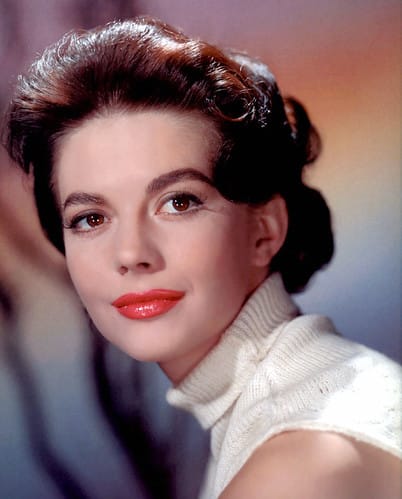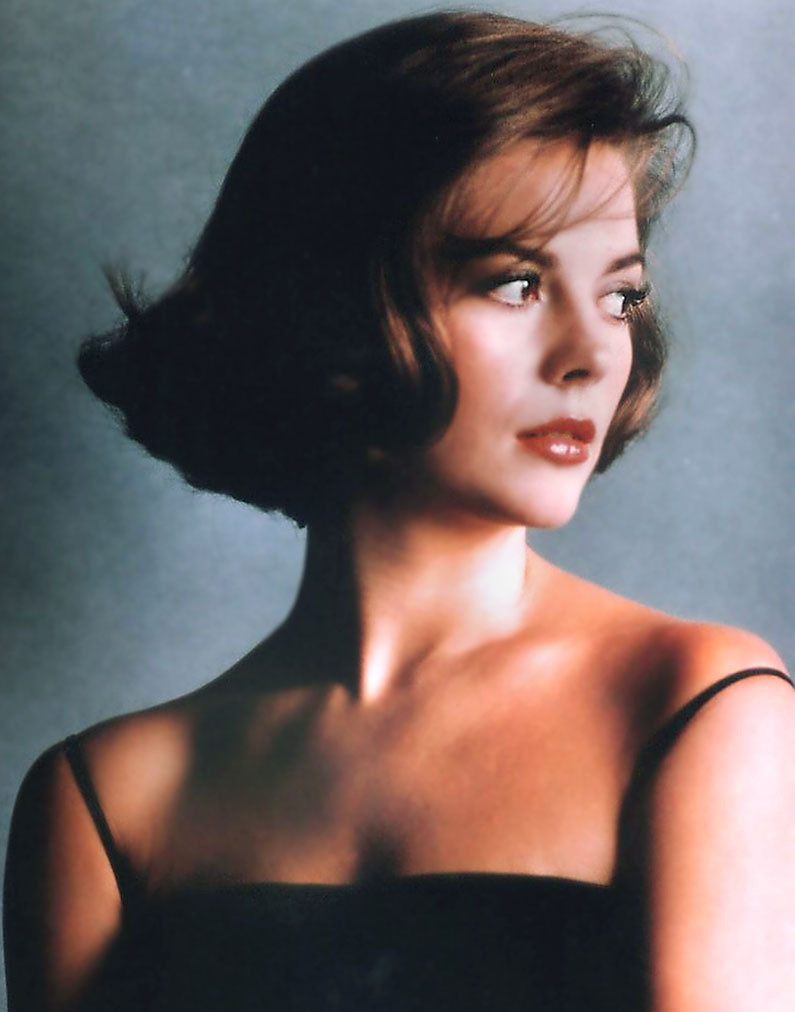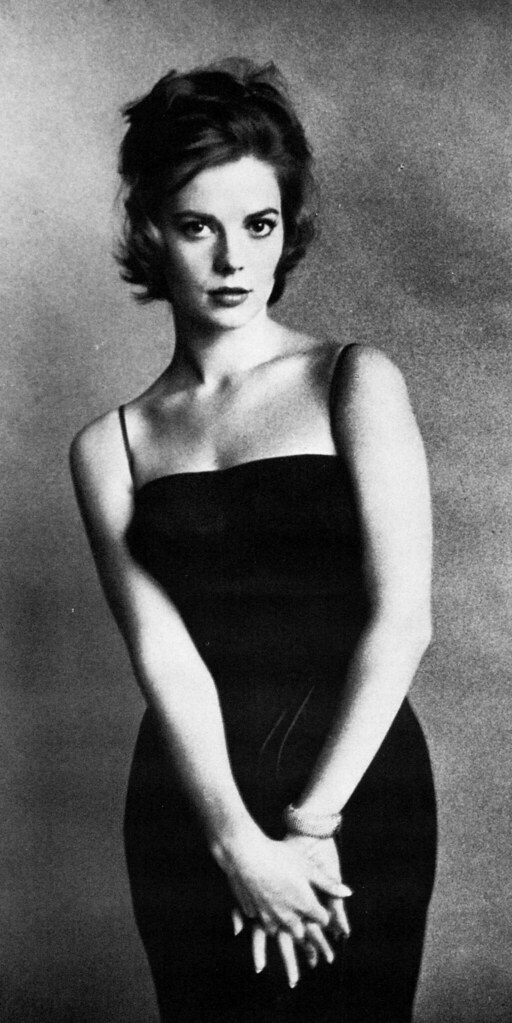
When we think of Natalie Wood, images of a glamorous silver screen siren, captivating audiences with her beauty and emotional depth, immediately come to mind. From her breakout role in “Miracle on 34th Street” at just eight years old, through her iconic performances in “Rebel Without a Cause” and “West Side Story,” Wood’s star ascended swiftly, earning her three Academy Award nominations by the tender age of 25. Yet, beyond the dazzling lights of Hollywood, behind the camera’s gaze, lay a woman who deeply cherished her private life, her loved ones, and the sanctuaries she created within her homes. She famously declared, “The most important thing to me is family—my husband and my kids. There aren’t a lot of other things to relate to.”
Natalie Wood, born Natalia Nikolaevna Zacharenko to Russian immigrant parents in San Francisco, truly embodied Hollywood royalty, not just on screen but in the way she curated her personal world. Even as her career peaked and a director remarked, “Natalie Wood has a stranglehold on every young leading-lady part in town,” she was fiercely independent, insisting on choosing her own roles, demanding equal pay, and even negotiating ownership stakes in her films. This same drive for control and personal expression extended to her domestic spaces, which evolved alongside her incredible life story.
Today, we’re inviting you on an exclusive journey into the homes and hidden corners of Natalie Wood’s life off-set. Through a series of intimate glimpses, we’ll explore the places where she grew, loved, and found solace, revealing the lesser-known facets of this enduring legend. From the maximalist decor of her teenage bedroom to the serene settings of her later estates, these snapshots illuminate the woman behind the legend, offering a rare look into the domestic world of one of Hollywood’s most cherished stars.

1. **Sister, Sister: Early Life and Family Bonds in Sherman Oaks**: Our journey begins in the summer of 1955, at the family’s California home located at 15036 Valley Road in Sherman Oaks. Here, a 16-year-old Natalie Wood is captured in a playfully protective pose over her younger sister Lana, framed within the doorway. This image offers a poignant window into their profound connection, a bond that transcended their eight-year age difference and remained a constant throughout Natalie’s life.
Lana later reflected on a draft of Natalie’s memoir, revealing, “I shed many, many tears over passages about me—how close we were, as sisters and friends and companions, and how much she loved me.” This sentiment underscores the deep affection and intertwined lives of the Wood sisters, who were not just siblings but confidantes and companions. Their shared experiences in the family home laid the groundwork for a relationship built on love and mutual support.
Before she became the iconic Beverly Hills lady, Natalie Wood, alongside her Russian immigrant parents and sister Lana, lived in various San Fernando Valley communities, including Sherman Oaks. It was in these early homes that the foundation of her family-centric values was firmly established. The warmth and camaraderie captured in this image are a testament to the loving environment that shaped the young star.

2. **The Budding Designer: Natalie’s Early Decorating Spark**: In a 1955 shot taken at the family’s Sherman Oaks residence, we find Wood chatting on the phone in her bedroom. What immediately strikes the eye is the maximalist decor, a vibrant early expression of a sensibility that would later blossom into her own interior decorating practice in the 1970s. This isn’t just a teenage girl’s room; it’s a canvas for an unfolding creative vision.
According to Natasha, Wood often repeated a key philosophy: “I learned how to decorate my home from the sets on my movies.” This unique approach, blending her professional world with her personal aesthetic, highlights how deeply design was woven into her identity. Her childhood bedroom, with its abundant details, can be seen as the very first ‘set’ for her lifelong passion for creating beautiful and expressive spaces.
3. **A ‘Pink Phase’ and Passion for Color**: Delving deeper into her Sherman Oaks bedroom, Wood’s childhood friend Jackie Eastes fondly recalled, “She was going through her pink phase. Everything was pink.” This vibrant dedication to a single hue speaks volumes about the young starlet’s bold and unequivocal personal style. The frilly canopy that adorned her bed and the delicate roses patterned on her wallpaper all echoed this favored shade, creating a truly immersive aesthetic.
But Natalie’s love for pink wasn’t confined to her bedroom walls. Her personal vehicles also received the frothy hue treatment. Her 1955 Thunderbird convertible perfectly matched her room, demonstrating a cohesive and passionate approach to her chosen color palette. Even the sleek silver blue Mercedes 300 SL roadster, which she acquired in 1957, was bathed in pink, further solidifying her signature style statement.
This ‘pink phase’ wasn’t just a fleeting teenage trend for Natalie; it was an early indication of her strong personality and her desire to infuse her surroundings with joy and personal expression. It showcased her innate ability to make a statement, a trait that would follow her throughout her life, both on and off the screen, defining her as a woman of distinct taste and flair.

4. **Natalie’s Animal Kingdom: A Lifelong Love Affair with Pets**: Beyond the glamour and design, Natalie Wood harbored a deep and enduring love for animals, a connection that enriched her domestic life immeasurably. She was known to own a diverse menagerie of pets over the years, far beyond the typical Hollywood star’s companion animals. Her collection included turtles, guinea pigs, mice, birds, lizards, ducks, rabbits, and of course, the dog captured alongside her in a sweet 1955 snap.
Her daughter Natasha Gregson Wagner eloquently described this special bond in her book, noting that Wood “had a special way of communing with animals.” This suggests a profound, almost spiritual connection that went beyond simple pet ownership. Natalie found a unique solace and understanding in the company of her furry and feathered friends, making her homes true havens for creatures great and small.
Interestingly, Natasha also revealed that Wood “often favored the ugly ones.” This detail provides a heartwarming glimpse into Natalie’s empathetic nature, highlighting her capacity for unconditional love and her preference for those often overlooked. It paints a picture of a woman whose heart was big enough to embrace all forms of life, finding beauty and companionship in the most unexpected places within her vibrant home life.

5. **The Charm of Stuffed Companions**: As if her living animal kingdom wasn’t enough to fill her homes with warmth and character, Natalie Wood also possessed an immense collection of stuffed animals. This charming eccentricity added another layer to her personal spaces, making them truly unique reflections of her inner world. Among these cherished companions was a giant stuffed tiger’s head, a particularly memorable gift from her mother, proudly mounted on her bedroom wall.
Actor Dennis Hopper, one of her “Rebel Without a Cause” costars and frequent visitors, found her immense collection to be both “cute and eccentric.” He famously noted that these plush friends were “everywhere” in the star’s bedroom, creating a whimsical and perhaps slightly overwhelming environment. This constant presence of soft, comforting figures speaks to a deeper need for companionship that Natalie candidly shared.
This 1955 photograph captures Natalie posing with her pet parakeet, affectionately named Gregory Peckwood, alongside two of her many stuffed monkeys. It beautifully illustrates the blend of real and imagined companions that populated her world. As we will later explore, her obsession with stuffed animals, according to Wood herself, was rooted in a profound sense of loneliness, adding a poignant depth to this seemingly whimsical collection.

6. **The Laurel Canyon Oasis: A New Chapter Begins**: Just in time for Christmas 1955, the Wood family embarked on a new chapter, moving into a newly-built, expansive 6,000-square-foot property situated on Laurel Canyon’s Woodrow Wilson Drive. This significant move marked a period of transition, as Natalie was blossoming from a tree-climbing, pet-loving kid into the “duskily beautiful sixteen-year-old who starred in Rebel Without a Cause.” The house itself, a stucco-and-stone fifties modern with three bedrooms, became the backdrop for her burgeoning stardom.
It was in this new home that the iconic kidney-shaped pool, featuring a distinctive tiled mermaid at the bottom, was reportedly added by Wood’s mother two years later. This wasn’t merely a recreational feature; it was strategically designed to serve as a communal gathering spot. Here, Wood’s mother could easily keep a watchful eye on Natalie and her “Rebel Without a Cause” costars-turned-companions—Dennis Hopper, Nick Adams, and James Dean—during their visits, creating a lively social hub.
Indeed, “Rebel” rehearsals often brought Natalie’s new friends to the Laurel Canyon house. Her sister Lana recalled how “boys flowed in and out of our house,” with all their arrivals, departures, and interactions meticulously monitored by their mother. The swimming pool even became part of their games, with friends making it a challenge to dive and touch the smiling tile mermaid. This home became a vibrant center for the young Hollywood elite, a place where camaraderie flourished. When Natalie later tied the knot with Robert Wagner in late 1957, her parents and sister moved out, entrusting the six-bedroom, seven-bathroom ranch-style home to the newlyweds, signifying her true independence.

7. **An Evolving Private Sanctuary: Her Laurel Canyon Bedroom**: With her newlywed status and a desire for greater independence after moving to Laurel Canyon, Natalie Wood meticulously transformed her bedroom into her personal haven. This space, which uniquely boasted direct access to the inviting pool, marked a significant aesthetic departure from her earlier, effusively pink quarters. It reflected a maturing taste and a deliberate shift towards a more sophisticated and modern sensibility.
The frilly canopy and multifloral-patterned walls that defined her Sherman Oaks room were consciously replaced with a sleek, contemporary design. Her new Laurel Canyon bedroom featured chic, all-black furniture, providing a striking contrast to the crisp white walls and plush white carpeting. This minimalist yet elegant palette offered a serene and uncluttered environment, a stark and refreshing change from her maximalist beginnings.
Further enhancing her private sanctuary, an en suite bathroom was thoughtfully attached to the bedroom, providing ultimate convenience and privacy. Additionally, a separate, dedicated dressing room was included, underscoring her evolving needs as a starlet and a woman. This transformation symbolized not just a change in decor, but a deeper embrace of her burgeoning independence and a refined vision for her personal space, truly making it her own.” , “_words_section1”: “1945

8. **An enviable closet**: Beyond the carefully curated rooms, Natalie Wood reveled in being a starlet, and her wardrobe formed a significant part of her identity and public image. Each ensemble, whether for a red-carpet appearance or a casual outing, was meticulously chosen to reflect her status and impeccable taste. Her commitment to glamour was unwavering, a testament to her understanding of Hollywood’s demands.
Her younger sister, Lana, once shared with The New York Times just how crucial this presentation was to Natalie, noting, “Natalie was always very careful to present herself as a movie star.” This wasn’t merely about vanity; it was an integral part of her professional persona and how she connected with her audience. Indeed, the Wood sisters were a familiar sight around town, often spotted “arm in arm all around town, in high spirits and beautiful clothes” from the fabulous fifties right up until Natalie’s tragic passing in 1981.
Her passion for fashion left an incredible legacy. In her will, the beloved ‘Splendor in the Grass’ star bequeathed to Lana all of her clothing—an astonishing collection that filled “rooms and rooms full of her fabulous pieces.” This image, taken in the sophisticated dressing room of her Laurel Canyon home, offers a tantalizing glimpse into the sheer scale and exquisite taste of Natalie Wood’s personal collection, a treasure trove reflecting her lifelong love affair with style.
Natalie Wood’s journey through her homes reveals a tapestry far richer and more complex than her glamorous screen image alone. From the vibrant, maximalist expressions of her youth to the refined, sentimental sanctuaries of her later years, each residence served as a canvas for her evolving self. Her homes were not just structures; they were extensions of her soul, reflecting her deep connections to family, her personal challenges, and her remarkable ability to create beauty and warmth in every space she inhabited. Her legacy endures, not just through her iconic performances, but through these intimate glimpses into the domestic world of a silver screen siren who truly found her greatest role in the art of living beautifully.




